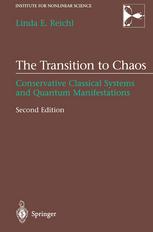

Most ebook files are in PDF format, so you can easily read them using various software such as Foxit Reader or directly on the Google Chrome browser.
Some ebook files are released by publishers in other formats such as .awz, .mobi, .epub, .fb2, etc. You may need to install specific software to read these formats on mobile/PC, such as Calibre.
Please read the tutorial at this link: https://ebookbell.com/faq
We offer FREE conversion to the popular formats you request; however, this may take some time. Therefore, right after payment, please email us, and we will try to provide the service as quickly as possible.
For some exceptional file formats or broken links (if any), please refrain from opening any disputes. Instead, email us first, and we will try to assist within a maximum of 6 hours.
EbookBell Team

0.0
0 reviewsThis book provides a thorough and comprehensive discussion of classical and quantum chaos theory for bounded systems and for scattering processes. Specific discussions include:
• Noether’s theorem, integrability, KAM theory, and a definition of chaotic behavior.
• Area-preserving maps, quantum billiards, semiclassical quantization, chaotic scattering, scaling in classical and quantum dynamics, dynamic localization, dynamic tunneling, effects of chaos in periodically driven systems and stochastic systems.
• Random matrix theory and supersymmetry.
The book is divided into several parts. Chapters 2 through 4 deal with the dynamics of nonlinear conservative classical systems. Chapter 5 and several appendices give a thorough grounding in random matrix theory and supersymmetry techniques. Chapters 6 and 7 discuss the manifestations of chaos in bounded quantum systems and open quantum systems respectively. Chapter 8 focuses on the semiclassical description of quantum systems with underlying classical chaos, and Chapter 9 discusses the quantum mechanics of systems driven by time-periodic forces. Chapter 10 reviews some recent work on the stochastic manifestations of chaos.
The presentation is complete and self-contained; appendices provide much of the needed mathematical background, and there are extensive references to the current literature. End of chapter problems help students clarify their understanding. In this new edition, the presentation has been brought up to date throughout, and a new chapter on open quantum systems has been added.
About the author:
Linda E. Reichl, Ph.D., is a Professor of Physics at the University of Texas at Austin and has served as Acting Director of the Ilya Prigogine Center for Statistical Mechanics and Complex Systems since 1974. She is a Fellow of the American Physical Society and currently is U.S. Editor of the journal Chaos, Solitons, and Fractals.